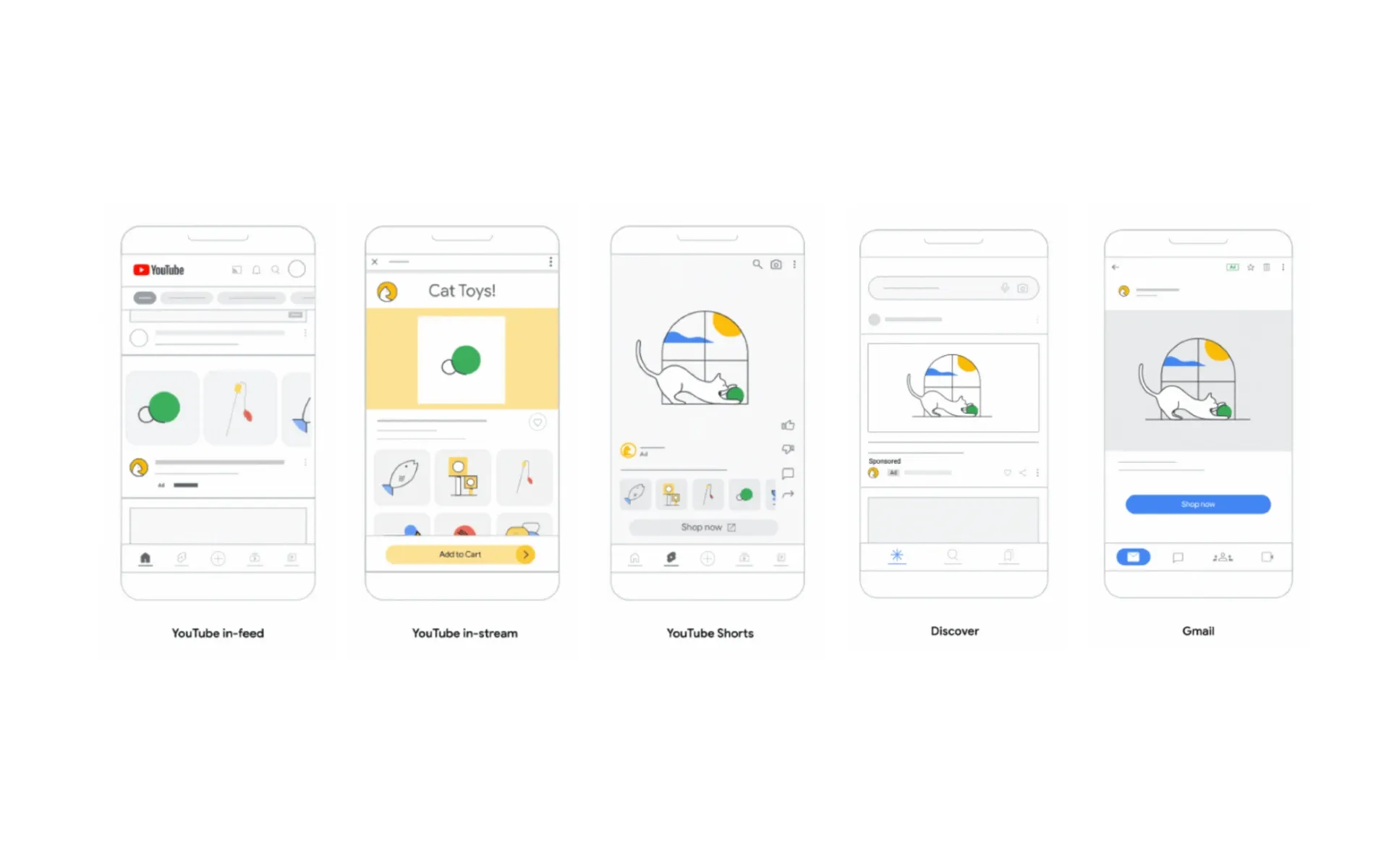Google expands Demand Gen campaigns to DV360
Google introduces Demand Gen campaigns to Display & Video 360, offering expanded reach and multi-format storytelling.

Google this month announced the integration of Demand Gen campaigns into its Display & Video 360 platform. The rollout, scheduled for October 2024, aims to provide marketers with enhanced tools for reaching and engaging audiences across multiple Google properties.
According to the Google Ads Help documentation, Demand Gen campaigns are designed for social advertisers seeking to serve visually appealing, multi-format ads on Google's most impactful surfaces. This expansion will allow advertisers to manage Demand Gen campaigns alongside other line items directly within Display & Video 360, streamlining campaign management and potentially improving overall advertising effectiveness.
The introduction of Demand Gen to Display & Video 360 comes with several key features:
- Expanded Reach
Demand Gen campaigns offer advertisers the opportunity to engage with up to 3 billion monthly active users across Google's ecosystem. This includes YouTube, which now averages over 50 billion daily views on its Shorts feature alone, as well as Discover and Gmail. The wide-reaching potential of these campaigns is underscored by Google's data, which indicates that one in three consumers have purchased items they discovered while scrolling through Google feeds, even when they were not initially shopping for those products. - Multi-Format Creative Storytelling
A standout feature of Demand Gen campaigns is the ability to run both video and image ads within a single line item. This flexibility allows advertisers to create more dynamic and comprehensive storytelling experiences across different formats. The importance of this multi-format approach is highlighted by Google's claim that advertisers who uploaded both video and image assets to their Demand Gen campaigns saw 20% more conversions at the same cost per action compared to those who used video assets only. - Audience Targeting with Lookalike Segments
Demand Gen campaigns introduce more specific and relevant audience targeting options, including lookalike segments. This feature enables advertisers to reach new audiences who share similarities with their existing customer base, potentially expanding their reach to qualified prospects who have not yet interacted with their brand. - AI-Powered Optimization
The campaigns leverage Google's AI capabilities to optimize ad placement and performance. The system aims to create the ideal combination of visuals, messages, and placements to drive consumer action. Additionally, A/B experimentation tools are available to help advertisers fine-tune their creative approaches and improve performance over time. - Comprehensive Measurement Tools
Demand Gen campaigns come equipped with various measurement tools, including brand lift and search lift studies. These tools are designed to help advertisers determine the effectiveness of their ad spend and optimize their campaigns accordingly. The use of data-driven attribution also allows for a more comprehensive view of a campaign's value within the Google ecosystem.
Technical Specifications and Requirements
For advertisers looking to implement Demand Gen campaigns, the Google Ads Help documentation outlines several technical requirements and best practices:
- Asset Types: Campaigns can include various asset types such as images (in landscape, portrait, and square formats), videos (in horizontal, vertical, and square orientations), and carousel ads.
- Text Elements: Advertisers need to prepare headlines, descriptions, final URLs, business names, and call-to-action text.
- Conversion Tracking: Proper setup of conversion tracking on the advertiser's website is crucial, with a recommendation to optimize for lightweight conversion events like 'add to basket' or 'site visit'.
- Budget Considerations: For campaigns using target CPA bidding, Google recommends setting a budget that is at least 15 times the target CPA.
- Creative Quality: The platform emphasizes the importance of using high-quality image and video assets, with minimal text and effective lighting, to drive better performance.
Comparative Positioning
Google positions Demand Gen campaigns as distinct from both Search and Performance Max campaigns. While Search campaigns focus on maximizing performance across Google Search, and Performance Max aims to optimize across all of Google's channels and surfaces, Demand Gen is specifically tailored to generate demand and deliver business results on Google's most visual and entertaining surfaces.

Implementation Timeline and Next Steps
With the October 2024 launch date approaching, Google is encouraging advertisers to prepare by:
- Reviewing existing assets for quality and policy compliance
- Familiarizing themselves with Demand Gen asset specifications and best practices
- Setting up proper conversion tracking
- Exploring the use of product feeds from Google Merchant Center for dynamic product ads
- Considering the implementation of lookalike segments to expand audience reach
As the digital advertising landscape continues to evolve, the introduction of Demand Gen campaigns to Display & Video 360 represents Google's effort to provide advertisers with more integrated and sophisticated tools for reaching and engaging audiences across its platforms.
Key Facts
- Launch Date: October 2024
- Platform: Display & Video 360
- Potential Reach: Up to 3 billion monthly active users
- Key Features: Multi-format ads, AI-powered optimization, lookalike segments
- Performance Claim: 20% more conversions for multi-format campaigns
- Supported Platforms: YouTube, YouTube Shorts, Discover, Gmail
- Asset Types: Images, videos, carousel ads
- Measurement Tools: Brand lift, search lift, data-driven attribution
- Budget Recommendation: 15 times target CPA for tCPA bidding campaigns
- Primary Focus: Visual and entertaining ad surfaces


